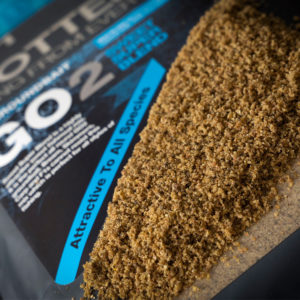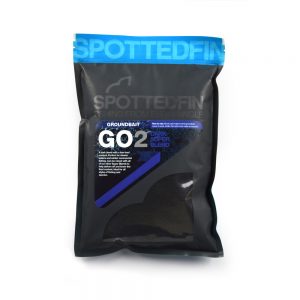Catching a big weight of commercial silver fish is all about getting your timing correct. There are often two groups of commercial silver fish and they are those that are quick to snaffle up any bait that is introduced into the lake, and those that bide their time before making their move.
Unfortunately for us, the first group are generally the smaller, more aggressively feeding roach that many commercial venues house, and the second group are species such as skimmers, bream and tench.

Now, I say unfortunately… in reality I don’t actually mean that as these smaller fish are just as important to this approach as the big ones, and will actually take up more of your time. That is because to do a weight of smaller roach is an out-and-out numbers game that requires you to work hard and adjust things to speed up your catch rate. Alternatively, to do a similar weight of skimmers and bream, far fewer fish are needed.
Why not just sit it out for the skimmers and bream you ask? Well, doing so will simply reduce your chance of catching too many of them, that’s why. Bream are relatively shy feeders at the best of times that need all sorts of encouragement to hang around. Feed some bait and they will come, but if they sense any sort of danger they’ll be out of there quicker than you can imagine.

You have to bide your time, and what better way of doing that is there than filling your net with the species that is willing to feed… roach.
Cane-Tipped Floats
When targeting silver fish on commercial venues with baits such as maggots and casters then a cane bristled float is my choice every time. Cane tips offer the ultimate in sensitivity and when dotted down present little to no resistance when the fish picks up your bait, which can be a massive advantage over buoyant hollow bristle alternatives.
Whether used in conjunction with a full depth rig and a strung-out shotting pattern or when deploying up in the water tactics as I am today, cane bristles are my preference.

I’ve opted for a 0.3g Dot ’Em Down Carbon Cane for the deeper of my shallow rigs, set at three feet, and a 0.2g version of the same pattern for half that, at a depth of 18 inches. To keep things comfortable and allow me to feed this by hand this line is located at a 5m distance.
The 3ft rig features strung No10 Ballabeni shot down from the 6in hooklength up and comprises a size 20 Gamakatsu LS-2260BB hook tied to 0.10mm diameter Milo Krepton Fluorocarbon. I can lay this rig in and hold tight to the float as it settles in order to spot any indications on the drop; if I’m having my bait intercepted a lot then that’s when I’ll look to pick up the shallower of the two rigs.

The lighter rig is set at 18 inches deep and features a bulk of shot set at half depth that I may choose to move around throughout the day to alter the fall of my hook bait; all other components remain the same with all my rigs tied up on 0.16mm Milo Mainline.
Hollow Bristles
While cane bristles are incredibly sensitive, they do have their negatives. The first is directly linked to one of their greatest attributes. Being so sensitive a cane bristle is suited to fishing with light baits that have little effect on the float in regards to shotting. However, when using larger hook baits or dealing with any tow that could encourage the float to get dragged under, a hollow bristle is a much better option. The hollow bristle offers its own buoyancy, which helps it stay suspended even when supporting larger baits like corn or worms. They are also much more visible, which can be another negative of cane.
For this reason on a longer pole line (13 metres) where I am looking to be more positive in my approach, targeting larger fish with bigger hook baits over a bed of sweet fishmeal groundbait, I will use a more stable pattern with a thick hollow bristle. A 0.6g Dot ’Em Down Tear is my choice and while main line and hooklength diameter remain the same, a slightly stronger size 18 Guru SLWG is preferred, while shotting is a bulk and two droppers.

I also opt for a hollow 5-8 rated elastic rather than the solid N05 used short. It’s around seven feet deep here so something to set the hook properly is important.
Bide Your Time
As I have mentioned, it is important to try and let the bonus fish line settle before dropping on it and potentially risk spooking the fish that are there. There’s no way better way to occupy some hungry skimmers than giving them a nice big bed of bait to graze over, and that means groundbait.
My choice is a 50/50 mix of Spotted Fin Dark Super Blend and Sweet Super Blend. The Super Blend groundbaits use the highest possible quality of ingredients and these two together create a lovely fluffy combination that skimmers and bream love. The Sweet Super Blend is a lovely sweet fishmeal groundbait that offers a lot of attraction while the Dark Super Blend darkens the mix off to my desired shade. I’m a big fan of darker mixes for silver fish even during the warmer months, and whether that is on a natural or commercial venue that doesn’t change.

Once mixed to a fairly damp consistency I like to add a good helping of dead maggots and casters, along with a few grains of corn. I want both the mix and the bait I introduce to be inert on the bottom rather than popping off all over the place or digging into the silt should I have introduced live maggots. Skimmers and bream have a tendency to tear up the lake bed at the best of times so I’ll do everything in my power to help prevent encouraging that!
Four balls are softly squeezed before cupping in – I want them to break down quickly and create a carpet of bait and will be left to settle for 40 minutes plus.

In the meantime I have been loose feeding casters regularly by hand. I have not set up a deck rig short as I simply don’t believe I could catch quickly enough for my liking doing so, and in these warm conditions the roach will compete for bait in the upper layers almost instantly. I’m right to think this would be the case as I’m soon catching a dumpy roach every single drop in on the 3ft rig. It’s a case of constantly laying the rig back in as hanging it mid-water simply isn’t producing.
After half an hour of quality sport short I start to see a few pimples coming up on the long line, which indicates that I should probably start thinking about having a look. There are clearly plenty of fish there but that fizzing is usually a sign of the fish searching beneath the groundbait and rummaging into the silt below. Dropping another little ball of groundbait packed with dead maggots and casters is usually just enough to concentrate them on picking out the bait within rather than sifting through the silt, and following it straight in produces the goods. A 12oz skimmer on my first visit is a great sign and is then followed by a better fish of 2lb. I manage another two fish before I begin to suffer a few strange indications and the peg begins to show signs of fizzing again. This is where having the two lines really begins to pay dividends.

Chop and Change
Dropping another feed-packed ball of groundbait into the peg and returning back short sees me top the net up with another couple of pounds of roach in the next 20 minutes before looking back long. I manage another quick run of three fish before I begin to experience similar signs and the process is repeated, each time putting a few roach in the net before going back out long, where I even manage to hook and land a carp among some skimmers and bream later in the session.
At the end of the session I have upwards of 35lb in my net, with the two contrasting approaches working hand-in-hand. Approaching the peg in either of the two ways would undoubtedly have seen me catch a few fish, but by giving myself the best of both worlds I have been able to be patient on the long pole line where bonus skimmers have been the target, while filling in the gaps with a quantity of smaller fish at short range. This has allowed me to maximise my peg’s potential by reducing any periods that I wasn’t putting a fish in the net.
Better still, all it has required is a couple of pints of maggots and casters and two half bags of groundbait!

Matty Uses…
-
 GO2 Sweet Super Blend£4.99 – £14.99
GO2 Sweet Super Blend£4.99 – £14.99 -
 GO2 Dark Super Blend£4.99 – £14.99
GO2 Dark Super Blend£4.99 – £14.99
